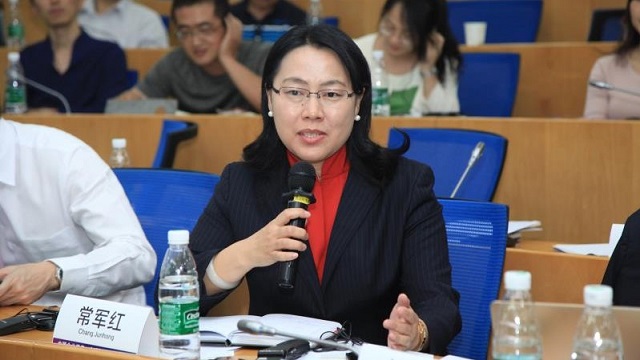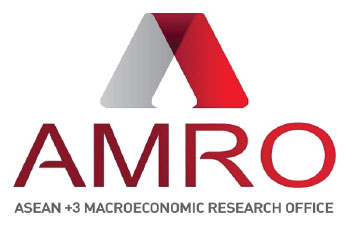Remarks By
Dr Junhong Chang, AMRO Director
Joint-Seminar by the ASEAN+3 Macroeconomic Research Office (AMRO), Tsinghua University School of Economics and Management,
National Institute for Fiscal Studies of Tsinghua University
on “Rising Corporate Debt in China:
Macro and Sectoral Risk Assessments”
28 August 2017, Beijing, China
(As prepared for delivery)
Professor Bai Chong’en, Executive Associate Dean of Tsinghua University School of Economics and Management and Director of National Institute for Fiscal Study
Distinguished panelists and guests,
Ladies and gentlemen,
A very good afternoon to you all.
It is my great honor to address such a distinguished gathering today. I would like to start by expressing my appreciation to Tsinghua University School of Economics and Management, National Institute for Fiscal Studies, and Yicai Research Institute, for co-hosting this seminar with AMRO, and for the excellent arrangements

AMRO Director Dr Junhong Chang delivers opening remarks at the seminar on corporate debt in China on August 28, 2017 in Beijing.
Ladies and gentlemen,
This year marks the 20th anniversary of the Asian financial crisis and the 10th anniversary of the Global financial crisis. It was largely in response to those two crises that AMRO was established in 2011 by the ASEAN+3 Finance Ministers and Central Bank Governors to conduct macroeconomic surveillance and provide policy advice to the member economies to minimize the risk of a financial crisis in the region. Our other core function was to provide secretariat and analytical support to the Chiang Mai Initiative Multilateralization (or CMIM) so that it is operationally ready at all times. It is our commitment to further contribute to the macroeconomic and financial stability of the region through these efforts.
Risk and vulnerability assessment is the core of our surveillance work. To enhance our capacity in this area, we are developing a comprehensive surveillance framework and analytical toolkits as well as conducting research projects that would help us assess areas of vulnerabilities more deeply and thoroughly. We have been extending our research outreach by presenting our research works at different seminars and conferences to present and exchange views with eminent scholars that would help deepen our understanding of the issues.
Ladies and gentlemen,
For the past few decades, the Chinese economy has leap-frogged and become highly integrated into the global economy. During the Global Financial Crisis (GFC) period, it continued to grow robustly boosted by a massive stimulus program, and was the most important driver of growth for the world economy and helped to cushion the global economic downturn.
However, nothing comes without cost. While China’s economy has grown at a respectable rate, it has come with emerging risks and vulnerabilities that need to be closely watched and addressed. High and rising corporate debt in China is among the top economic issues in China that economists, media and policy makers around the world are paying increasing attention to.
Early studies show that structural and institutional factors as well as the cyclical factors related to the stimulus package are the main drivers behind the rapid increase in corporate debt. However, comprehensive work on risks from the rising corporate debt in China is still lacking. Aggregate data assessments in the existing research works are not sufficient to identify the corporate debt problems. The few existing sectoral analyses that exist also cover only listed firms. AMRO economists have therefore attempted to conduct a study that incorporates both aggregate and sectoral perspectives. For the past two years, they have put substantial efforts to gather data from various financing sources for both listed and non-listed Chinese firms and employ different approaches to analyze risks to corporates as well as to the financial sector.
The main findings point out that, in the short- and medium-term, a crisis originating from corporate indebtedness is unlikely to happen. However, there are pockets of vulnerabilities in the mining and real estate sectors as well as amongst manufacturing SOEs, particularly steel companies. Policy efforts to mitigate risks should therefore focus on these groups of corporates.
I hope that our study will provide better understanding about corporate debt risks in China. I am also certain that the discussion by distinguished discussants as well as participants later on in this seminar will help enhance our assessment and benefit policy consideration in this important area.
Thank you very much.
